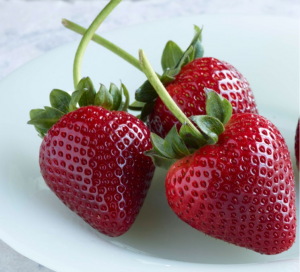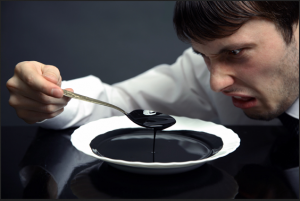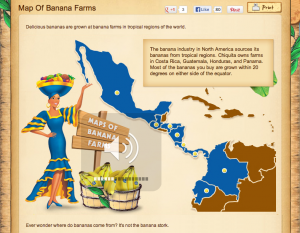– Pasta and Tomato Sauce with Mushrooms
Catelli pasta is locally made, in Montreal in a factory. Of course, the production of grain into pasta is quite the process. Dried pasta, like Catelli is made with semolina, egg, vegetable juice and some herbs and spices. We must consider where all of these products come from too. As I have posted previously, we already know where eggs come from. In terms of making vegetable juice, the process and energy used to do this is huge- where we are burning so much energy making this and not gaining great quantities of juice. Pasta is made mostly through the usage of heavy machinery to knead, flatten and dry out the pasta once it is ready; then package it and send it to our local grocery stores. Consider the amount of fossil fuels and oil it is taking to power huge production plants to make and ship the pasta out to stores, and then the gas from our homes to the store, and back to make our meals. In this consideration, Manning asserts that:
“We spend more calories of fossil-fuel energy making ethanol than we gain from it”
Just imagine how much energy it is taking just to make all the different types of pastas…
The mushrooms I added to the pasta are locally sourced, from the Fraser Valley. They are hand picked and then sorted and packaged in a factory. However, being hand-picked, I can assume that there is less fossil-fuel energy being burned than if there were heavy machinery to pick the mushrooms. Mushrooms at the grocery store are self serve, into a paper bag- which of course is recyclable.
I made fresh tomato sauce, using fresh tomatoes, blended some basic herbs and olive oil. The tomatoes I chose were also locally picked, from BC. Knowing that they do not come in any sort of a package, and that they are sourced locally made me feel confident in my purchase. However, after doing some research, I realized the tomatoes were grown in a greenhouse- direct source of greenhouse gas. However, Hot House also commits to sustainable processes that claim to only have limited environmental impact. Hot House also does not grow in soil or dirt, which eliminates the immediate need for herbicides and pesticides. Most of the oil we eat in this case, comes from the fuel in the transportation methods from farm to table.
BC Hot House Environmental Sustainability
Olive Oil is produced solely from the natural process of grinding olives together and extracting the oil. This is doen both chemically and mechanically. Olive oil is also made in a factory, where fossil fuel oil is needed to operate machinery, and package bottles of oil. Moreover, it is then transported, usually from places such as Italy to us, in Canada.
Manning states:
“If the entire world ate just like the USA- humanity would exhaust all global fossil-fuel reserves in just over 7 years”




